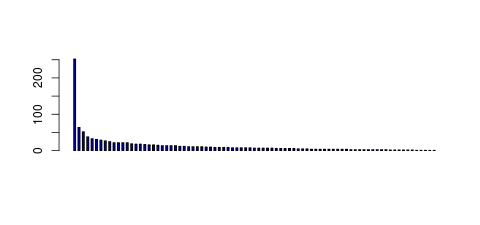| Bos taurus Gene: GPR77 | |||||||||||||||||||
|---|---|---|---|---|---|---|---|---|---|---|---|---|---|---|---|---|---|---|---|
| Summary | |||||||||||||||||||
| InnateDB Gene | IDBG-639987.3 | ||||||||||||||||||
| Last Modified | 2014-10-13 [Report errors or provide feedback] | ||||||||||||||||||
| Gene Symbol | GPR77 | ||||||||||||||||||
| Gene Name | C5a anaphylatoxin chemotactic receptor C5L2 | ||||||||||||||||||
| Synonyms | C5L2 | ||||||||||||||||||
| Species | Bos taurus | ||||||||||||||||||
| Ensembl Gene | ENSBTAG00000037735 | ||||||||||||||||||
| Encoded Proteins |
C5a anaphylatoxin chemotactic receptor C5L2
|
||||||||||||||||||
| Protein Structure | |||||||||||||||||||
| Useful resources | Stemformatics EHFPI ImmGen | ||||||||||||||||||
| InnateDB Annotation from Orthologs | |||||||||||||||||||
| Summary |
[Homo sapiens] GPR77 is an alternate receptor for C5a and is negatively regulated by the TLR-signalling pathway. TLR-mediated inhibition of GPR77 results in the amplification of complement pro-inflammatory responses. (Demonstrated in murine model)
[Mus musculus] Gpr77 is an alternate receptor for C5a and is negatively regulated by the TLR-signalling pathway. TLR-mediated inhibition of Gpr77 results in the amplification of complement pro-inflammatory responses.
|
||||||||||||||||||
| Entrez Gene | |||||||||||||||||||
| Summary |
This gene does not have any Entrez summary - the following is the summary from its human ortholog ENSG00000134830:
This gene encodes a G-protein coupled receptor 1 family member involved in the complement system of the innate immune response. Unlike classical G-protein coupled receptors, the encoded protein does not associate with intracellular G-proteins. It may instead modulate signal transduction through the beta-arrestin pathway, and may alternatively act as a decoy receptor. This gene may be involved in coronary artery disease and in the pathogenesis of sepsis. Alternative splicing results in multiple transcript variants. [provided by RefSeq, Nov 2012] |
||||||||||||||||||
| Gene Information | |||||||||||||||||||
| Type | Protein coding | ||||||||||||||||||
| Genomic Location | Chromosome 18:54777175-54781917 | ||||||||||||||||||
| Strand | Forward strand | ||||||||||||||||||
| Band | |||||||||||||||||||
| Transcripts |
|
||||||||||||||||||
| Interactions | |||||||||||||||||||
| Number of Interactions |
This gene and/or its encoded proteins are associated with 0 experimentally validated interaction(s) in this database.
|
||||||||||||||||||
| Gene Ontology | |||||||||||||||||||
Molecular Function |
|
||||||||||||||||||
| Biological Process |
|
||||||||||||||||||
| Cellular Component |
|
||||||||||||||||||
| Orthologs | |||||||||||||||||||
|
Species
Homo sapiens
Mus musculus
|
Gene ID
Gene Order
|
||||||||||||||||||
| Pathway Predictions based on Human Orthology Data | |||||||||||||||||||
| NETPATH | |||||||||||||||||||
| REACTOME |
Peptide ligand-binding receptors pathway
Class A/1 (Rhodopsin-like receptors) pathway
Signaling by GPCR pathway
Signal Transduction pathway
GPCR ligand binding pathway
Signaling by GPCR pathway
Class A/1 (Rhodopsin-like receptors) pathway
GPCR ligand binding pathway
Peptide ligand-binding receptors pathway
Signal Transduction pathway
|
||||||||||||||||||
| KEGG | |||||||||||||||||||
| INOH | |||||||||||||||||||
| PID NCI | |||||||||||||||||||
| Cross-References | |||||||||||||||||||
| SwissProt | |||||||||||||||||||
| TrEMBL | Q08DZ7 | ||||||||||||||||||
| UniProt Splice Variant | |||||||||||||||||||
| Entrez Gene | 522144 | ||||||||||||||||||
| UniGene | Bt.45845 | ||||||||||||||||||
| RefSeq | NM_001077947 XM_005219293 XM_005219294 | ||||||||||||||||||
| HUGO | |||||||||||||||||||
| OMIM | |||||||||||||||||||
| CCDS | |||||||||||||||||||
| HPRD | |||||||||||||||||||
| IMGT | |||||||||||||||||||
| EMBL | BC123493 DAAA02047415 EF030605 | ||||||||||||||||||
| GenPept | AAI23494 ABI98946 | ||||||||||||||||||
| RNA Seq Atlas | 522144 | ||||||||||||||||||
| Transcript Frequencies | |||||||||||||||||||
| Tag Count based mRNA-Abundances across 87 different Tissues (TPM).
Based on Data from Bovine Gene Atlas |
(Move your mouse over the image to view a more detailed version) |
||||||||||||||||||


